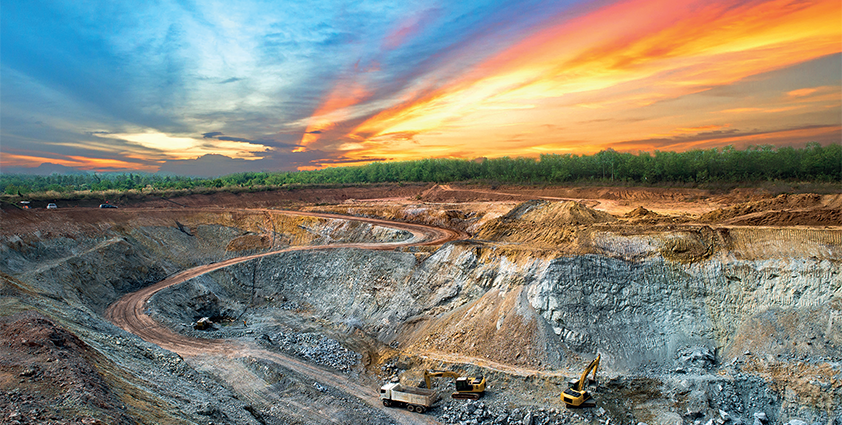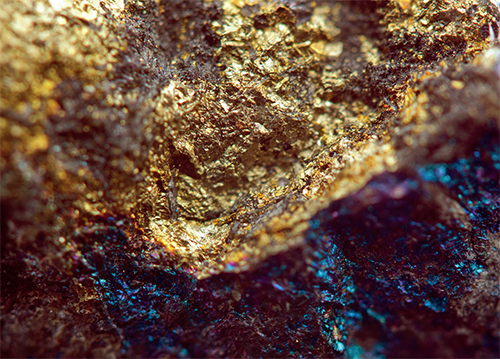
Climate Change, Net Zero and Minerals
Shifting to renewable energy sources plays a major part in global efforts to mitigate climate change. Since the 2015 Paris Agreement, renewable energy consumption has increased at a year-to-year rate of around ten percent. However, to continue to meet on-going targets, investment will be needed in the further wide-scale adoption of low-carbon energy alternatives, especially in light of the government’s long-awaited transport decarbonization plan that was announced recently.
A low-carbon future isn’t possible without significant access to key minerals. Wind, solar and energy storage batteries are particularly reliant upon minerals. However, minerals required for the clean energy shift are more material intensive than traditional fossil-fuel-based alternatives. The 2015 Agreement climate stabilization targets require quadrupling mineral requirements for clean energy technologies by 2040.
While new opportunities will arise for mining companies and mineral-rich countries, significant challenges will need to be overcome in mineral price volatility, mineral supply equity and resource sustainability.
The role of minerals in renewable technologies
The most commonly used minerals here are aluminum (including its key constituent bauxite), chromium, copper, iron ore, lithium, lead, manganese, molybdenum, silver, steel, zinc and the rare earth metal indium. Below is an overview of the key mineral requirements of the three most important elements of renewable energy technology: wind power, solar power and battery storage technology.
Wind Power
The wind turbine industry predominantly uses geared turbines with coil-driven generators that require significant amounts of copper. They also require aluminum, chromium, iron, manganese, nickel, steel and zinc.
Solar Power
The most commonly produced Solar Photovoltaic (PV) cells are crystalline silicon, followed by copper indium gallium selenide (CIGS), cadmium telluride (CdTe) and amorphous silicon/amorphous silicon-germanium.
 Energy Storage Batteries
Energy Storage Batteries
There are many technologies for energy storage batteries, including the two most popular forms – lead-acid and lithium-ion – and a variety of other battery chemistries, including nickel-metal-hydride and sodium-sulphur.
Increasing global demand for minerals: new opportunities for mining companies and mineral rich-countries
The average amount of minerals needed for a new unit of power generation capacity has increased by 50 percent as the share of renewables has risen. As renewable energy technology demand continues to increase, so will demand for the necessary minerals.
Under a 2-degree scenario (2DS) the production of graphite, lithium and cobalt will need to increase from 2018 levels by over 450 percent by 2050 to meet demand from energy storage technologies. Experts predict this global 2DC low-carbon switch will require $1.7 trillion of additional investment by mining companies over the next 15 years. The projections do not include the associated infrastructure needed to deploy renewable energy technologies, such as transmission lines and gas pipelines or that needed to support green societies, such as fully electrified public transport. As growth in demand for minerals soars, supply chains will need to keep up.
The demand for renewable energy technology is global but the required mining map of mineral resources required for these technologies is not. India is dominant in iron, steel and titanium. China’s position in mineral resources dwarfs that of other countries, including Canada and the US. In 2015 China was producing 32m metric tons of aluminum smelter. Russia was next with 3.5m metric tons produced. The map of untapped mining reserves is much broader with untapped pockets of the world holding huge amounts of resources. The largest share in 95 percent of world chromium resources, for example, are in Kazakhstan. More than 50 percent of global cobalt reserves are in Congo.
The result is significant growth opportunities in supply for both mining companies and the currently under-served and under-producing mineral-rich nations. Latin America is in an excellent position to play a crucial role in global supplies of climate-friendly technology minerals. The continent holds particularly significant reserves of copper, iron, silver, lithium, aluminum, nickel, manganese and zinc. Africa has significant opportunity in supply, with large reserves of platinum, manganese, bauxite and chromium. Guinea alone holds 26 percent of known global reserves of bauxite, but is currently only responsible for 6.5 percent of global production. Developing countries overall hold 94 percent of the world’s bauxite reserves, 100 percent of chromium reserves, 67 percent of cobalt reserves and 46 percent of copper reserves. There is opportunity for investment in mining and mineral production in regions that have historically struggled to capture significant components of global supply chains. Better mapping of
minerals in Global South countries will create more opportunities to develop sustainable mining in resource-rich countries, where mapping technology is currently weak compared with resource-rich Global North countries.
Challenges of demand and price volatility
For investors, predicting mineral demand will be challenging. Demand patterns will shift with the evolution of our energy systems, market innovations and selected different designs for similar technologies. Part of the challenge of mapping supply and demand patterns will be predicting technology choices. If, for example, amorphous becomes the preferred solar technology, demand in minerals will be slower than if the mineral intensive crystalline silicon solar PV installations were to win the battle for the market in that technology. If hydrogen takes off as expected, the need for platinum, iridium and titanium for electrolysers will intensify.
Concentrated minerals such as graphite and cobalt with fewer technological uses may be subject to higher demand uncertainty, particularly if technologies change. For cobalt, demand could increase by up to 30 times depending on the evolution of battery chemistry and climate policies. Minerals with applications across numerous renewable energy technologies, are likely to maintain significant demand.
Current investors looking for opportunities see coal production revenues ten times larger than the energy transition materials. However, continued strength in global climate change policies would result in revenues from energy transition material overtaking coal by 2040. The significant increase in demand for minerals will have a knock-on effect on the affordability of those minerals. Plotting the effect of rising mineral prices on demand will be a key element in predicting mineral investment opportunities in the renewable energy transition.
A super cycle for minerals?
The phenomenal rise in demand for minerals is not slowing and predictions for future usage are staggering. The Benchmark Mineral Intelligence (BMI) index of lithium prices climbed 59 percent between April 2020 and May 2021; BMI also forecast lithium demand to more than triple between 2020 and 2025, rising to a million tons and out-pacing supply by 200,000 tons. Nickel usage is predicted to grow seven-fold to 240,000 tons in 2023, a compound annual growth rate (CAGR) of 20 percent. Graphite usage has increased 233 percent between 2020 and 2021. All of this growth is a result of recent increases in electric vehicle production alone.
Are we heading for a super-cycle? The need for minerals for renewable energy technology and its infrastructure will only become more urgent as we head towards climate change target dates. Although China is beginning to slow, it still outpaces all other nations on infrastructure spend. The US has been lacking in spending on infrastructure for decades, but is changing. President Biden’s $1.2 trillion infrastructure stimulus plan will be the beginning. Total US infrastructure investment needs are estimated to be closer to $3.8 trillion.
Yet as this demand soars, supply dwindles. It seems difficult to conceive of how to avoid a significantly prolonged period of rising prices, supported by phenomenal demand and limited supply. The drivers behind rising mineral requirements require unprecedented levels of long-term supply of minerals that are not mapped and ready to extract. The length of this super-cycle hinges on the ability of government and industry investment, so future supply has a chance of meeting demand.
Mineral supply equity and resource sustainability
This increasing demand for minerals for renewable energy technology will pose a challenge for mineral supply equity and resource sustainability, with long-term impacts from supply chains of non-renewable resources and the potential for an increased risk of environmental and human harm resulting from increased intensive mining of minerals. Addressing these challenges will require a correlation of thought and action between the mining-metal industry, climate and environmental groups and clean energy technology actors.
Historically the law of natural resources, including minerals, focused on facilitating extraction rather than protection and sustainability. Contemporary governance, however, is more attuned to both efficiency (reducing waste and unintended consequences) and equity (fairness in control and distribution) in mineral mining. Now, organizations such as the Goa Foundation in South India, are fighting for, and winning, legal recognition of rights of intergenerational equity in mineral mining. Now there is global consensus: sustainable development of mineral resources must meet contemporary needs, without compromising the needs of future generations.
Respecting this sustainable development whilst riding the wave of increases in mineral demands, will require recognition of the fundamental rights that can be impeded by unsustainable mineral practices. Respect for indigenous land rights, genuine efforts in local community and stakeholder participation and preventing environmental contamination, will be at the top of the sustainability agenda in mineral mining. Significant political instability in areas with significant mineral reserves, instability likely to only increase as mineral demand rises, will also pose a significant challenge. This challenge not only impedes the attractiveness of investments and ease of doing business in certain regions, but also has foundational implications for the human development and well-being of some of the world’s most vulnerable people.
Beyond external impact, pressure is also building from government and policy groups, such as the Task Force on Climate Related Financial Disclosures (TCFD), for the decarbonization of mining companies. Long-term mineral supply will require climate change risk adaptation policies that address the sector’s particular challenges, such as assets that are particularly vulnerable to the volatile weather patterns that will arise from changes in global temperatures.
One of the biggest current environmental concerns of mineral-intensive renewable energy technologies comes from the recycling of these minerals following the end-of-life of these products. Currently, recycling rates are only positive for iron and steel. Increasing rates of recycling of these metals could improve supply and sustainability but further research and attention is needed here, as recycling rates are currently poor.
Reuse of minerals will play a key role in meeting future mineral demand. If, for example, end of life recovery and reuse of aluminum were to increase to 100 percent, there would be a reduction of 25 percent in global production needs. However, reuse rates vary greatly across minerals due to technological and cost issues. This is one area where increased policy measures can incentivize global action and mitigate some concerns.
If there is no mitigation of the potentially harmful environmental and social effects of mineral production, clean energy technologies may not continue to have the same level of global support that they have today. Regional innovators in clean technology, such as Green Lithium in the UK, are working with strategic partners to develop clean and low-carbon processing of minerals for regional needs. Alternatives to traditional energy storage technologies, such as liquid energy storage, are developing. Globally, programs like the World Bank Climate Smart Mining Initiative will play a key role in marrying the opportunities and challenges of ensuring a stable and sustainable supply of minerals for renewable energy technologies, whilst limiting the carbon and environmental footprints of the associated increase in mineral production.
Conclusions
There is a huge opportunity for valuable and equitable investment in mining and mineral-resource rich countries to support global support for renewable energy technologies. To ensure that this opportunity develops in a manner that is sustainable and equitable will require an open dialogue between the climate, clean energy and extractive industry communities, to allow for effective alignment of the mineral and renewable energy sectors to meet the net zero targets. Corporate, governments and policy leaders will need to take an active role in mitigating mineral investment risk to ensure adequate flow of capital into the sustainable mining needed to support the net zero transition.
For a list of the sources and references used in this article, please contact the editor
 CHARLES BOND
CHARLES BOND
Charles Bond is a natural resources partner at international law firm, Gowling WLG. With more than 1,400 legal professionals in 19 cities worldwide, Gowling WLG provides clients with in-depth expertise in key global sectors and a suite of legal services at home and abroad. It sees the world through its clients’ eyes, and collaborates across countries, offices, service areas and sectors to help them succeed, no matter how challenging the circumstances. Gowling WLG (UK) LLP is a member of Gowling WLG.
For further information please visit: www.gowlingwlg.com